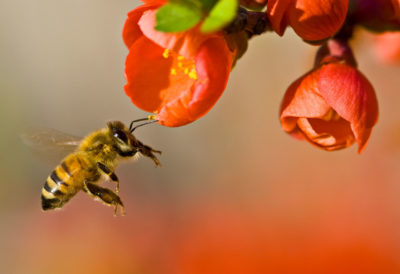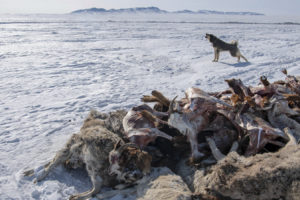Bees exposed to a neonicotinoid pesticide are able to fly just a third of the distance that unexposed bees can and stay in the air for far less time, according to a new study published in the journal Ecology and Evolution. The findings indicate that the pesticide may reduce the area that bee colonies are able to forage for food by as much as 80 percent.
The research, led by scientists at Imperial College London, used an experimental “flight mill” — a spinning magnetic arm that attaches to a magnet on a bee’s back — to track flight speed and distance. It found that exposed bees tended to exhibit a short burst of energy at the beginning of their flight, moving faster than unexposed bees, before quickly wearing themselves out.
“Neonicotinoids are similar to nicotine in the way they stimulate neurons, and so a ‘rush’ or hyperactive burst of activity does make sense,” said Daniel Kenna, an ecologist at Imperial College London and lead author of the study. “However, our results suggest there may be a cost to this initial rapid flight, potentially through increased energy expenditure or a lack of motivation, in the form of reduced flight endurance.”
Exposure to neonicotinoids has previously been shown to decrease the amount of food that bee foragers bring back to their colony. It has also been found to make them more likely to become disoriented and separated from their hives and less likely to care for or feed larvae, while reducing the number of eggs laid by queen honeybees by as much as two-thirds. Last year, the European Union banned all outdoor uses of neonicotinoids due to the mounting scientific evidence of their harmful impacts on bees.
“Exposed foraging bees may find themselves unable to reach previously accessible resources, or incapable of returning to the nest following exposure to contaminated flowers,” Richard Gill, an Imperial College London ecologist and a senior author of the study, said in a statement. “Not only could this reduce the abundance, diversity, and nutritional quality of food available to a colony affecting its development, but it could also limit the pollination service bees provide.”



